
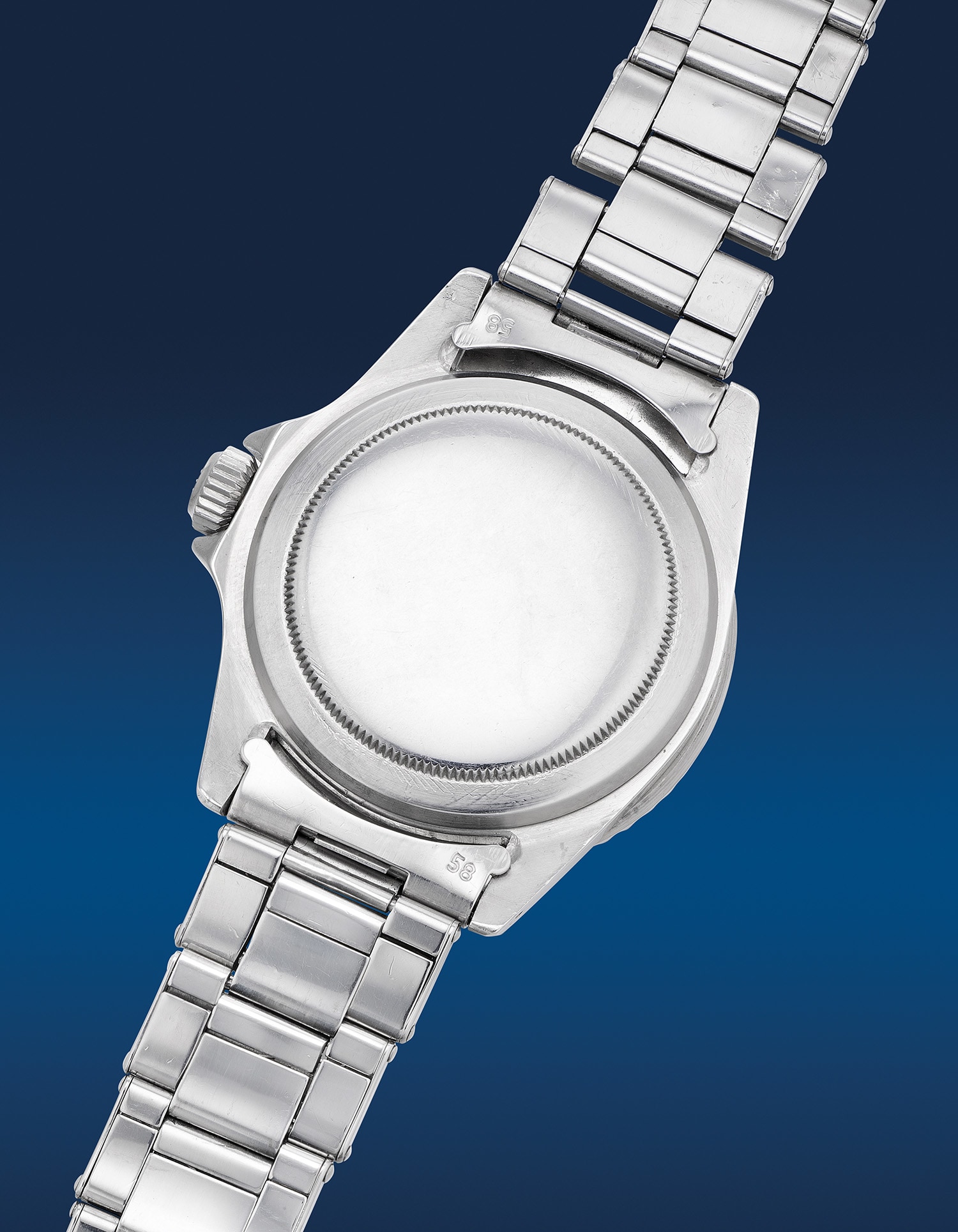
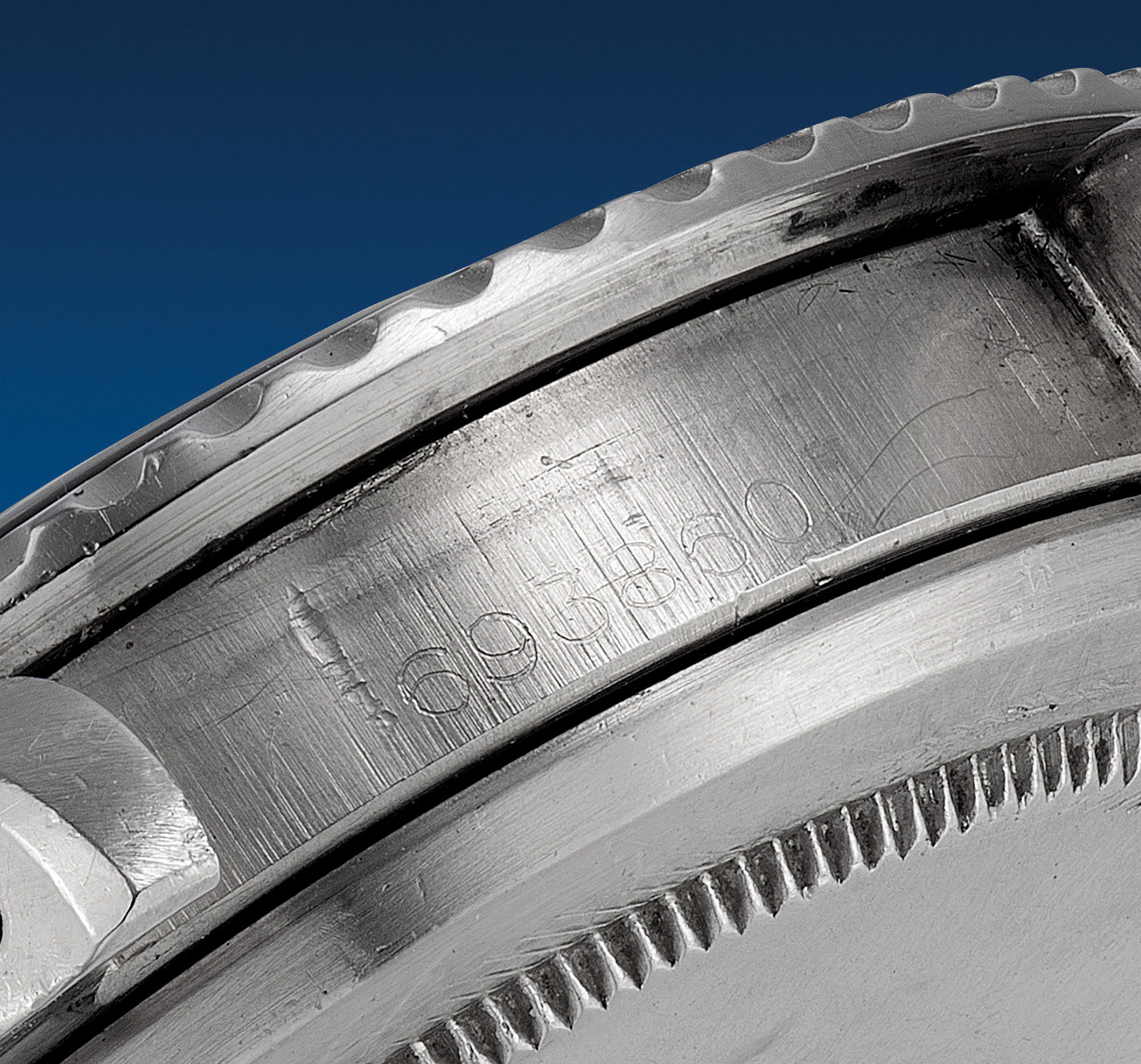
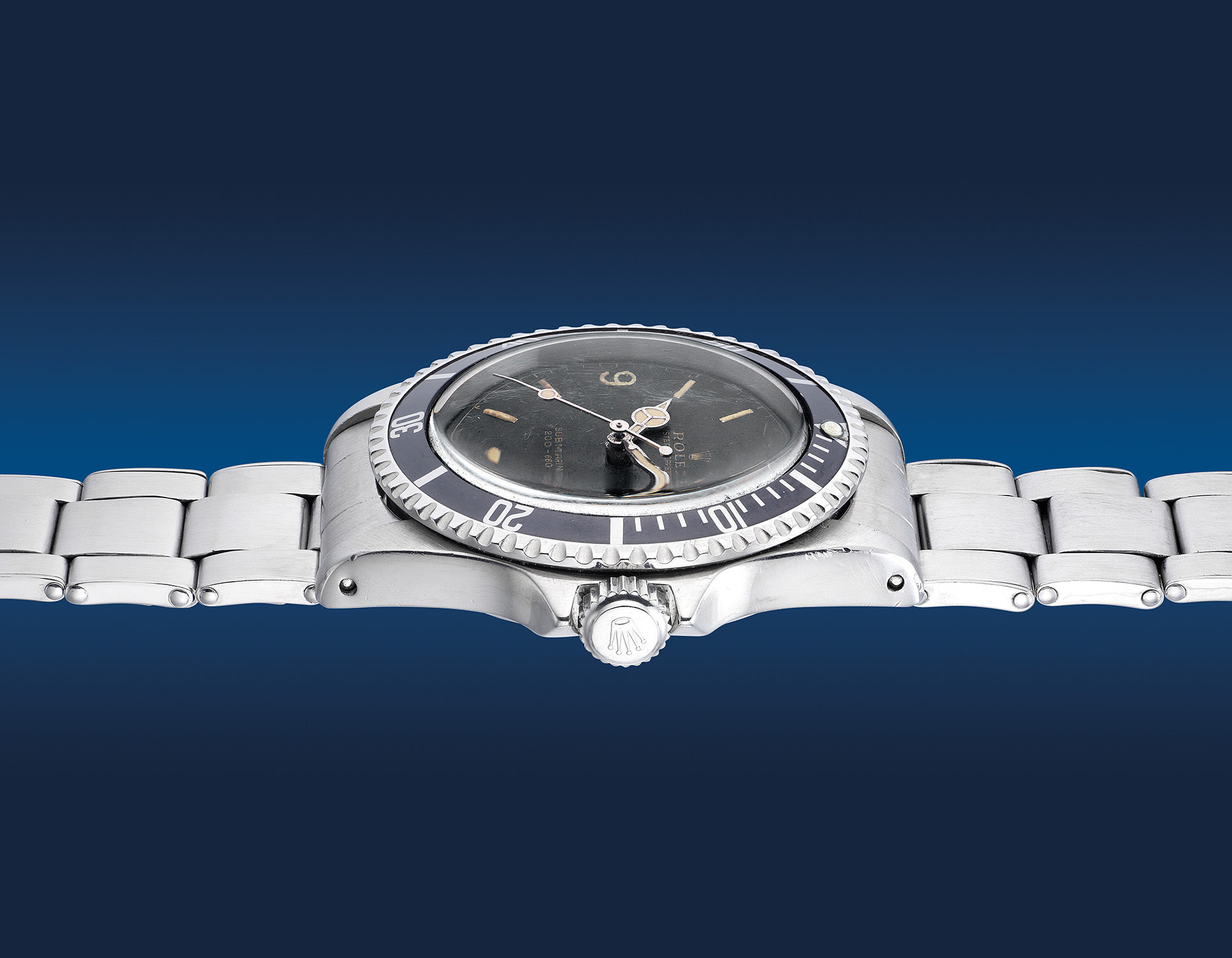
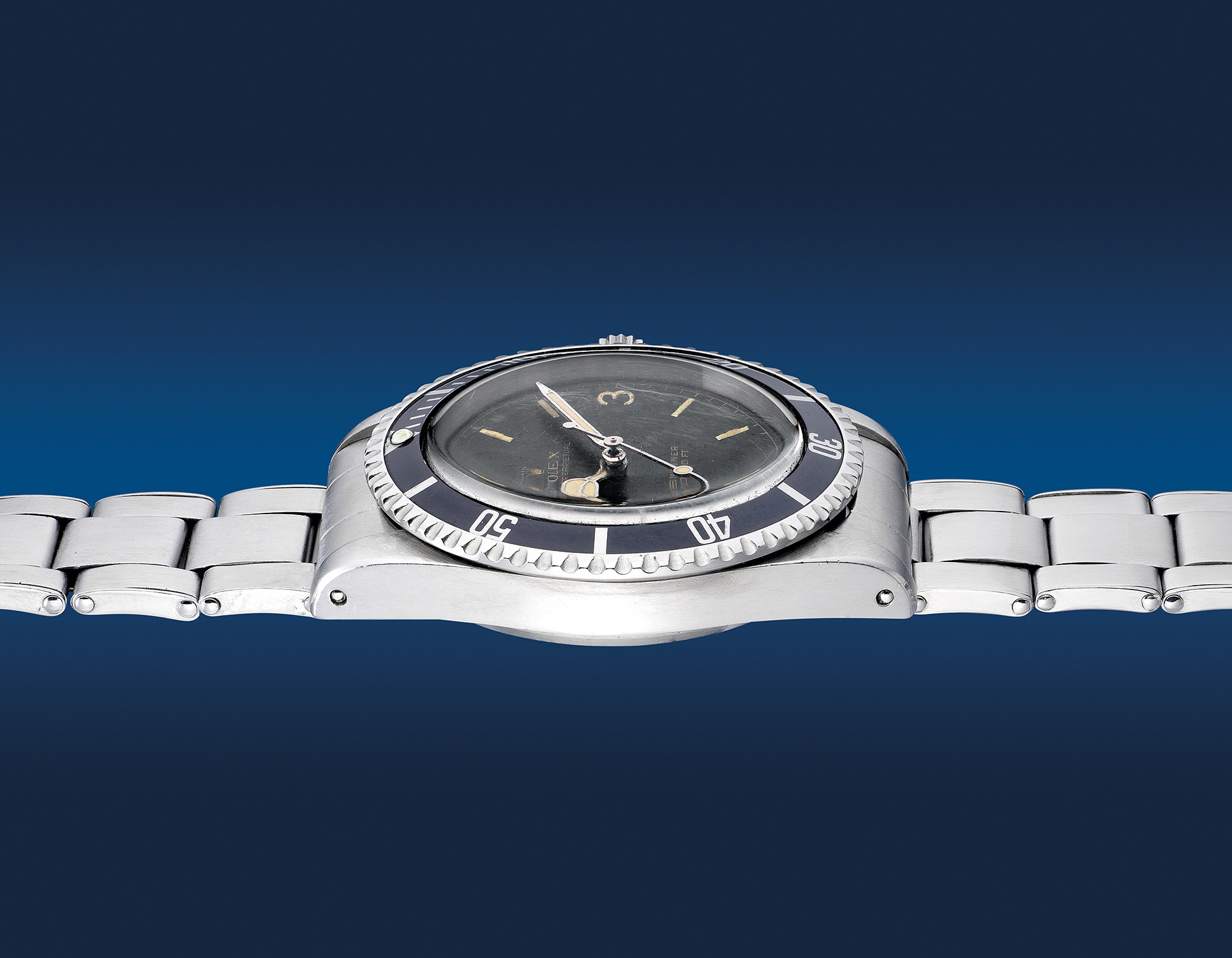
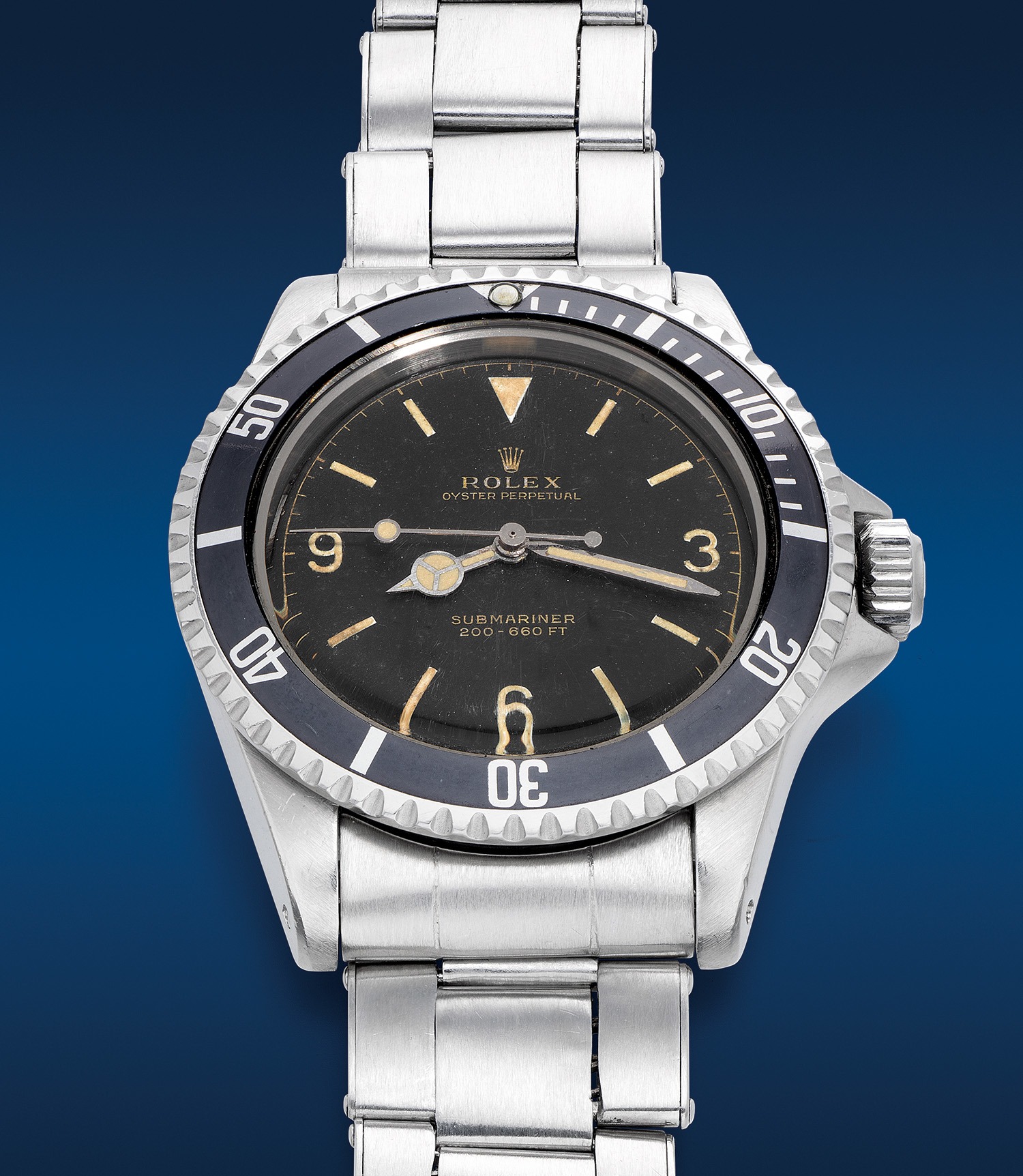






949
Rolex
Ref. 5512
Submariner “Explorer Dial”
An exceedingly rare and early stainless steel diver’s wristwatch with “exclamation mark” Explorer dial, center seconds, pointed crown guards and bracelet
Full-Cataloguing
Over the production of the references, the 5512 & 5513 went through many more design nuances with chronological significance, these details of subtlety that excites vintage Rolex collectors. In fact, when it comes to the Explorer dial, there are four types of explorer dial further divided by their use of radium or tritium luminescent material as follow:
1961-1962 – Exclamation Mark dial with chapter ring, absence of “m” for meters and non-italic FT (present example)
1962 – 1963 – Underline dial with white Swiss inscription, open chapter ring, meter first depth rating
1963 – 1964 – Underline dial with gilt Swiss inscription, open chapter ring, meter first depth rating
1963 – 1964 - Underline dial with gilt SWISS < T-25, open chapter ring, meter first depth rating
The present Submariner Explorer dial ref. 5112 is undoubtedly part of the earliest production recognizable by its exceptional details such as the attractive two-liner gilt dial with chapter ring and pointed crown guards. Furthermore, the depth rating differs from later dials with the absence of “m” for 200 meters, as well as a capitalized, non-italic “FT” inscription for feet. Marked with the most desirable and important detail of all is the dot that sits at 6 o’clock which identified by collectors as the “Examination mark” dial. Such dials were in production only for a very short period between 1961 until 1962 to designate the transition of luminous material (tritium over radium) with lower radiation count due to health hazards during the era.
According to research, not only is this the earliest known ref. 5512 with Explorer dial, but also an extraordinary fresh-to-the-market gem. Extremely well-preserved with wonderful patina, strong proportions and beautifully aged lumes. The bezel insert also belongs to the period correct “Long 5” insert which has also faded into a an attractive dark grey hue.
A true treasure and an impressive well-preserved example, the present Explorer-dial Submariner is a highly unusual and extremely attractive version of one of the most beloved dive watches ever made, qualities that make it a must-have for collectors of important vintage watches.
Rolex
Swiss | 1905Founded in 1905 England by Hans Wilsdorf and Alfred Davis as Wilsdorf & Davis, it soon became known as the Rolex Watch Company in 1915, moving its headquarters to Geneva in 1919. Like no other company, the success of the wristwatch can be attributed to many of Rolex's innovations that made them one of the most respected and well-known of all luxury brands. These innovations include their famous "Oyster" case — the world's first water resistant and dustproof watch case, invented in 1926 — and their "Perpetual" — the first reliable self-winding movement for wristwatches launched in 1933. They would form the foundation for Rolex's Datejust and Day-Date, respectively introduced in 1945 and 1956, but also importantly for their sports watches, such as the Explorer, Submariner and GMT-Master launched in the mid-1950s.
One of its most famous models is the Cosmograph Daytona. Launched in 1963, these chronographs are without any doubt amongst the most iconic and coveted of all collectible wristwatches. Other key collectible models include their most complicated vintage watches, including references 8171 and 6062 with triple calendar and moon phase, "Jean Claude Killy" triple date chronograph models and the Submariner, including early "big-crown" models and military-issued variants.